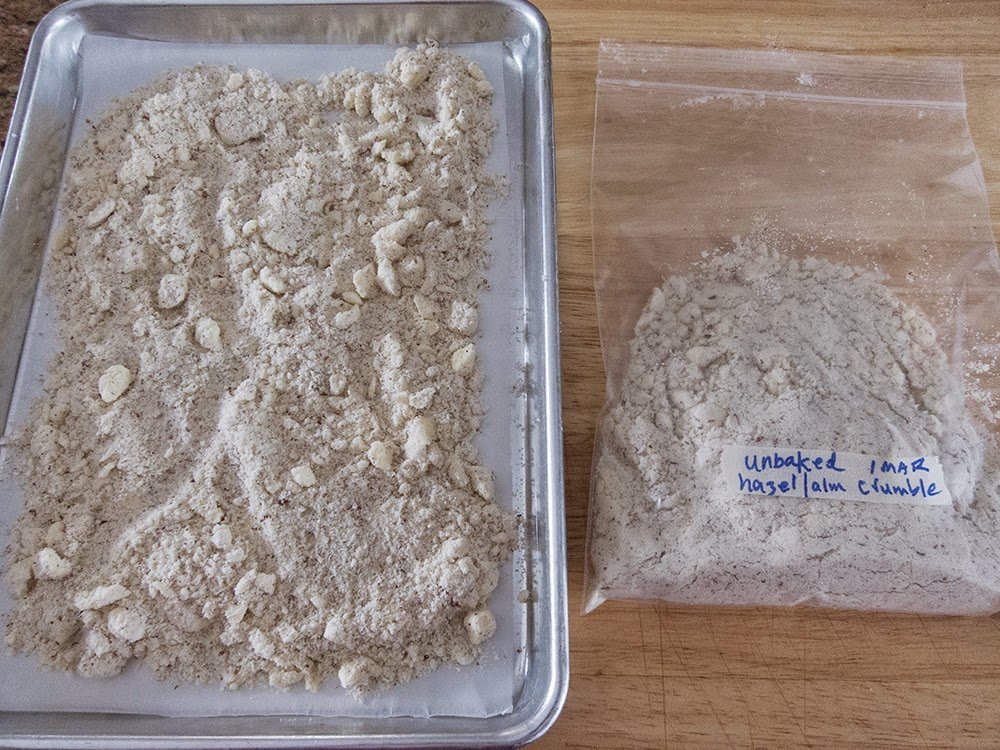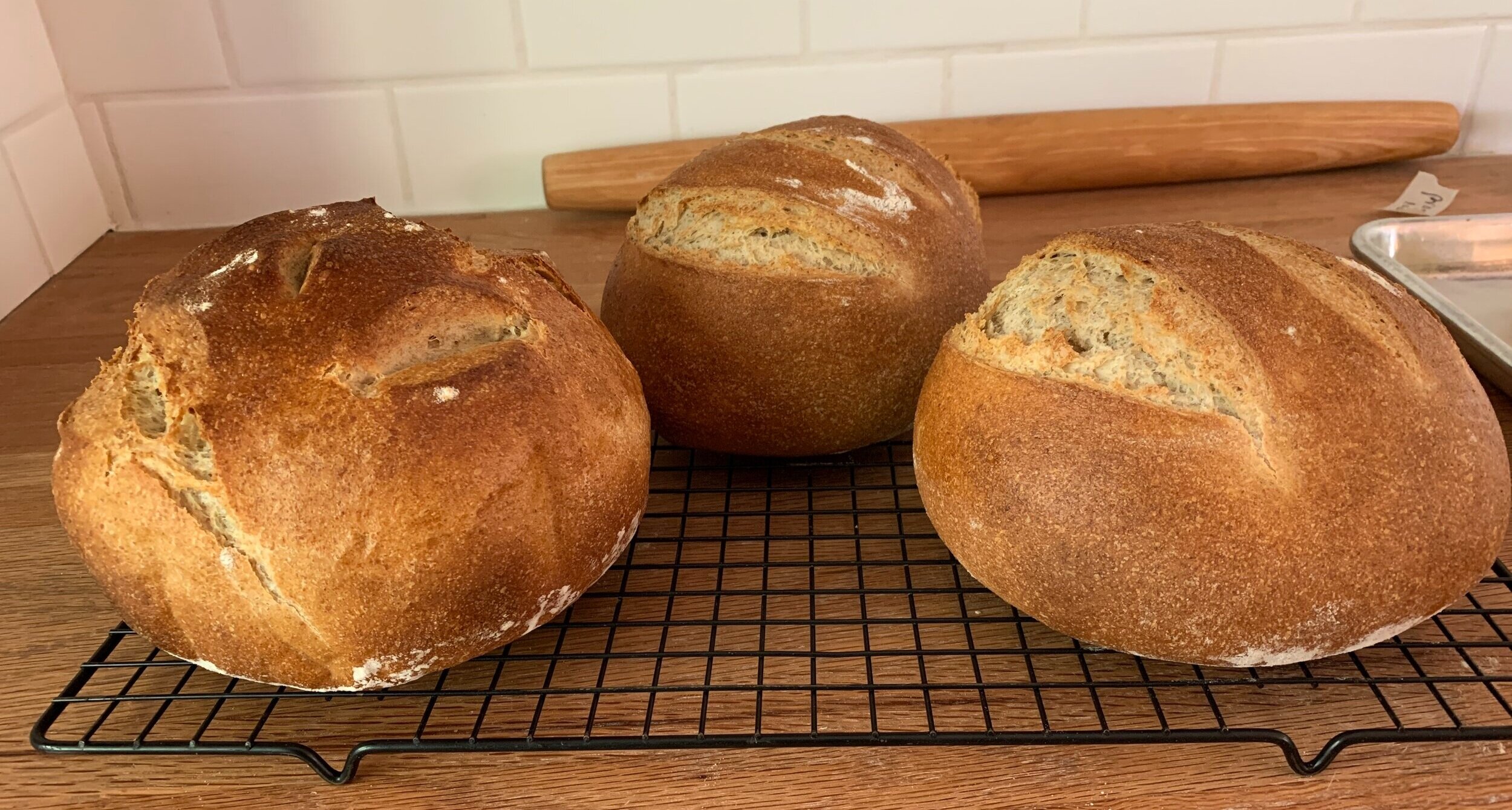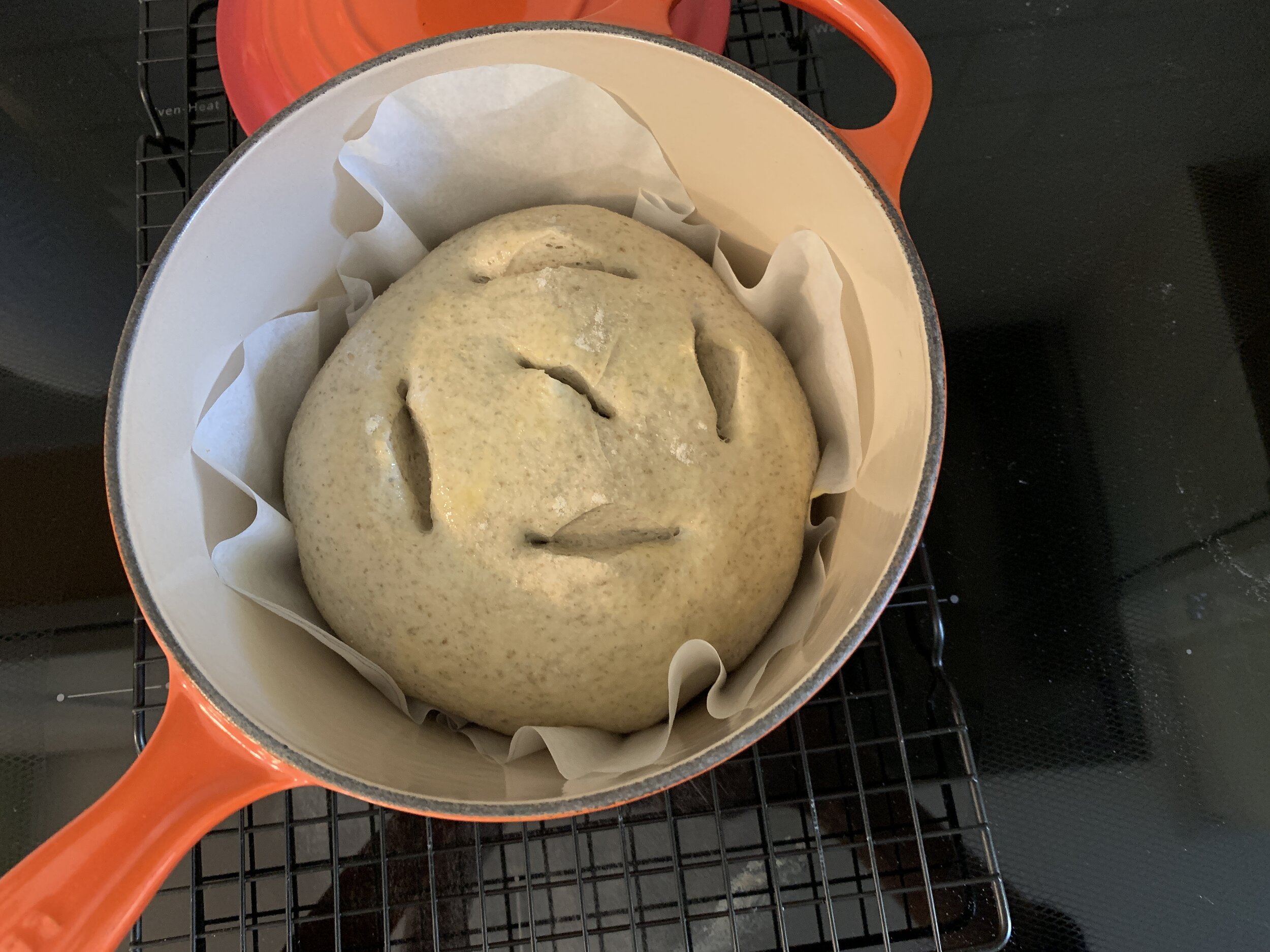Maple blueberry almond butter teacakes
/These craggy, chunky, fruity, crumbly teacakes are delicious! I mentioned them back in a “puttering in the kitchen” update back in August, 2020 when I first gave the recipe a try. I discovered it on the foil lid of a Siggi’s yogurt container and did a couple of different versions then. It calls for almond butter, an ingredient I’d like to use more often. Since I purchased a fresh jar of said butter a few weeks back, I thought it was time to give it another go.
Here’s the recipe and my mise below. Lots going on here but once you have all your ingredients laid out, the prep is very straight forward. Think calm, organized, methodical and you’ll be just fine.
My flour mix is all purpose, almond, spelt and dark rye (or whole wheat pastry) - play around with your own mix. The sweetener is a blend of maple syrup, dark brown sugar and honey in amounts that play down the sweetness. When I first made these, they seemed a bit flat on the taste buds, but once one gets used to the reduced sugar content, the other ingredients offer new found cake enjoyment.
Mise
In a medium bowl blend dry ingredients - flours, baking powder, baking soda and salt.
In a separate larger bowl whisk together milk, almond butter, maple syrup, brown sugar, honey, egg, vanilla and yogurt. Whew!
Dry and wet ready to blend
Fold dry ingredients into wet in three additions.
All blended up
Fill your chosen molds about 3/4 full. As many of you know I’m a sucker for Silikomart silicone molds in various shapes and sizes (set them on a wire grid placed in a half sheet pan - better air circulation for even baking). This time I went with one of my newer shapes - a pleasing rounded rectangle of sorts. Press a few blueberries into the tops and cover with streusel.
My streusel topping is made by blending 50 g / 1/4 cup sugar, 100g / 3/4 cup all purpose flour (or whole wheat pastry) and a large pinch of salt in a medium bowl. Then sand in 70 g / 5 tablespoons cool, diced unsalted butter to coarse crumbs and stir in 30 g toasted sliced almonds. Give the cakes a generous coverage even though it looks messy. And remember - if you’re making streusel, double or triple or quadruple your batch and stash the extra in the freezer for next time. Nothing like planning ahead.
Bake at 400ºF for 20-25 minutes. Look for a tester to come out clean.
All craggy and crunchy
Let cool in the molds about 10 minutes then release the cakes onto a cooling rack. When baking plain cakes in silicone molds, I simply lift up an edge, tilt and let each cake fall out onto a rack, but when streusel/crumble is involved, it can be a little tricky to get them out of the molds. I pick up a corner, tilt it and gradually push each cake up from the bottom as you ease it out. You’ll lose some streusel in the process but just be gentle and go for it. Finish cooling on racks or sneak one while it’s still a bit warm.
The cake is nicely moist and the blueberries and streusel add just the right combo of flavors and textures. These keep for 2-3 days in a covered container at room temp and also freeze well for several weeks.
Have fun with it!
It’s still summer by the calendar, but we’ve already had a few crisp chilly nights in the 40s. I’m looking forward to the official start of autumn - anyone wish to predict the first frost?
Cheery late summer blooms












































